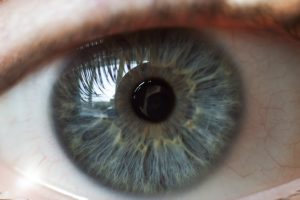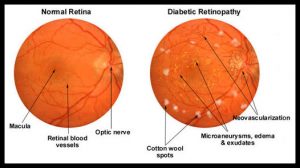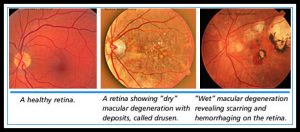 Here at Eye Studio Optometry, here are a few examples of the medical conditions we are able to treat.
Here at Eye Studio Optometry, here are a few examples of the medical conditions we are able to treat.
Astigmatism
Astigmatism is one of the most common vision conditions, and most people have some form of astigmatism. It can be caused by an irregular-shaped cornea or an abnormal curvature of the lens.
Minor astigmatism may not affect your vision or require treatment. However, many cases cause blurred or distorted vision, which can result in pain and headaches. Typically, astigmatism is present with nearsightedness and farsightedness.
During your examination, we test for astigmatism using a phoropter and retinoscope, which both measure refraction.
Depending on the severity of the astigmatism, we can provide eyeglasses or contact lenses to help correct your condition. There is also a wide range of other solutions that may also work for you. We would be happy to discuss your options with you at your appointment.
Diabetic Retinopathy
 Diabetes comes with a lot of other problems that affect your whole body. Even your eyes can be affected by the disease. In fact, this is so common that it actually has a name: diabetic retinopathy.
Diabetes comes with a lot of other problems that affect your whole body. Even your eyes can be affected by the disease. In fact, this is so common that it actually has a name: diabetic retinopathy.
Diabetic retinopathy is a disease of the retina. Your retina is necessary to transfer everything that your eyes see to your brain.
Diabetic retinopathy usually continues to get worse, especially if your diabetes is not under control. Still though, it can get worse even with controlled diabetes. For this reason, we recommend having regular checkups so that we can monitor your eyes. During the progression of the disease, you may not even notice any symptoms, which makes coming in regularly even more important.
The first stage of the disease involves the blood vessels in your eyes. They get really weak and leak blood into your eyes. If the leaking continues and leaks into the center of your eye, you will have blurry vision. Your body will try to compensate by making new blood vessels, but they will also be weak and leak more blood into your eye. Your body might also try to form scar tissue, which causes the retina to move away from your eyes and can lead to legal blindness.

Macular Degeneration
 Macular Degeneration is the loss of central vision due to damage to the retina. The macula is a part of the retina located on the back layer of the eye that affects the center of the visual field.
Macular Degeneration is the loss of central vision due to damage to the retina. The macula is a part of the retina located on the back layer of the eye that affects the center of the visual field.
Macular degeneration is often related to age and can be atrophic (dry) or exudative (wet).
The dry form of macular degeneration is most common, and there is no medical or surgical treatment. It occurs when debris, which can cause scarring, collects between the retina and the choroid.
The wet form is less common, but more dangerous. It occurs when blood vessels that grow from behind the choroid leak into the eye. If it is diagnosed early, this form of macular degeneration can be treated with laser coagulation and medication.
Macular degeneration is one of the leading causes of vision loss in adults over 50. Common signs include gradually blurred vision, decreased perception of vivid colors, and an obstruction in the center of vision. While your peripheral vision may remain intact, macular degeneration can still make daily activities, such as reading or recognizing people’s faces, difficult.
As always, the sooner the disease is detected, the easier it is to treat. You are also less likely to lose your vision if you treat it promptly.
Keratitis
Keratitis refers to inflammation of the cornea. Signs of keratitis include pain in the eyes, blurred vision, eye redness, tearing of the eye, and much more. The pain can be a little irritating, though it can become really severe, depending on the cause and how bad it is. Many people complain of sensitivity to light.
There are many causes of the disease. You can have an infection, dry eyes, an injury, or an underlying medical condition. Treatment depends on the cause. With infections, you may need to be treated with an antibacterial, an antifungal, or an antiviral, depending on the cause of the infection.
If a foreign body is affecting your eye, it needs to be removed. If you have dry eyes, you will need eye drops to increase your tear production. Sometimes steroids are prescribed to help decrease the inflammation, though you must be really careful when using them. If you wear contact lenses, you should stop wearing them while your eyes heal.
It is very important to treat keratitis quickly to avoid permanent damage to your eyes.
Red Eye
Red eyes are a sign of ocular inflammation. Eyes are red and sometimes itchy and painful. You may notice discharge and have trouble with your vision. There are many different diseases that can cause red eye, including conjunctivitis, blepharitis, foreign body, scratches, allergies, and much more.
It is important to have a thorough examination that includes going over patient history to help determine what is causing your red eye. There are times when primary physicians can handle red eye, though there are some cases which you need to be seen by an ophthalmologist.
We are here for you when your primary care physician is unable to help. We should be seen if you are having vision loss with your red eye. If regular eye drops are not helping, you may need to see us so we can prescribe you topical steroids. It is also important to come to an ophthalmologist if you are have an eye injury or a possible sore on your eye. We also need to see you if you have recently had eye surgery. Anytime you feel you need to be seen by an ophthalmologist, don’t hesitate to call!
Stye Treatment
A stye is a bump caused by a blocked gland. There are two different types, which are each treated differently. It is important to be seen by an ophthalmologist so that your stye can be treated the right way!
Styes can be accompanied by redness and pain in the same area as the bump. Some people complain that their eye is irritated and scratchy. Some complain that their eye is always watering, while others complain of a sensitivity to light. If left untreated, you may develop swelling and discomfort.
The first treatment for styes is applying a warm compress to the eye. This will help to soften the material in the gland so that it can drain. Picking the stye will cause scarring, so it is not recommended. We sometimes inject a steroid into the lesion to help it heal quicker. We have had to open and drain some styes to help them heal. Sometimes oral antibiotics are necessary if there is an infection.
Treating of the cause of the stye is important so that it does not come right back! We will work with you to get rid of the cause of your stye so you don’t have to worry about another one!
Please be sure to contact us if you have any questions.

